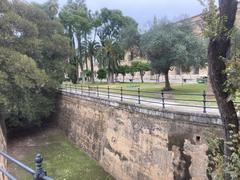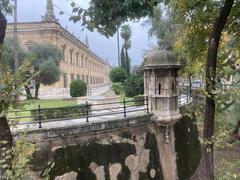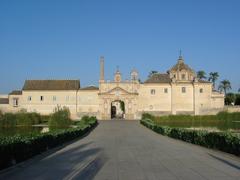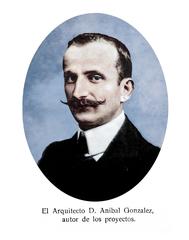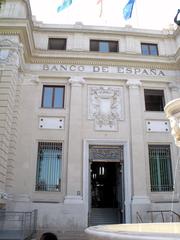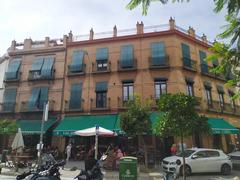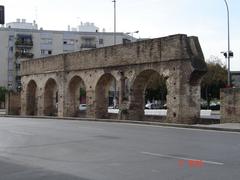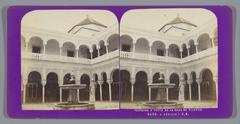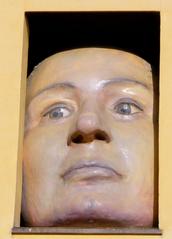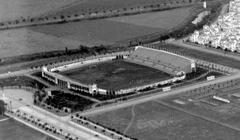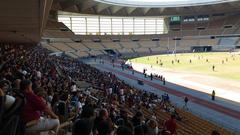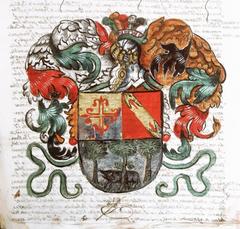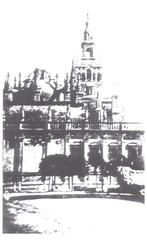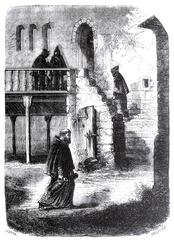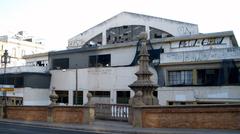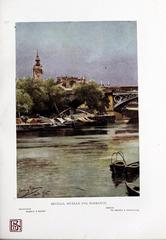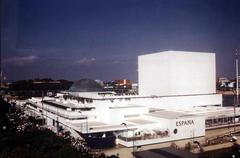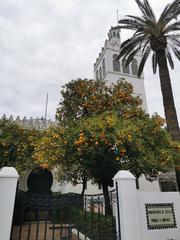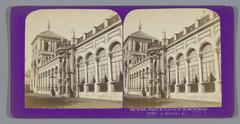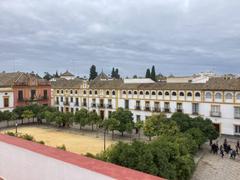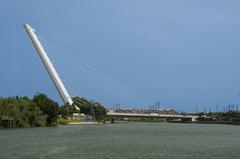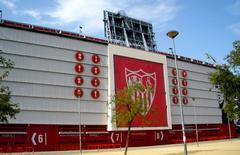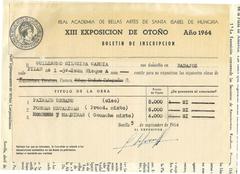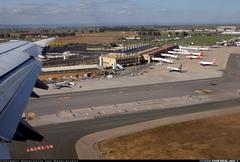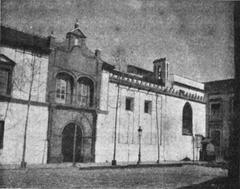
Royal Tobacco Factory Seville: Complete Visitor Guide, History, Tickets & Tips
Date: 15/06/2025
Introduction
The Royal Tobacco Factory (Real Fábrica de Tabacos) in Seville is a monumental icon of Spain’s industrial, architectural, and cultural heritage. Built in the 18th century, it was once the largest tobacco factory in Europe and played a pivotal role in Seville’s economic rise following the discovery of the Americas. Today, the factory is the main campus of the University of Seville and stands as a testament to the city’s dynamic evolution from colonial trade hub to vibrant university city. This guide covers everything you need to know for a rewarding visit, including up-to-date visiting hours, ticketing, guided tours, accessibility, historical context, cultural highlights, and travel tips (University of Seville, Visit Seville, Visitar Sevilla).
Table of Contents
- Introduction
- Visitor Information
- Historical Overview
- The Cigarreras and Cultural Impact
- Architecture & Artistic Features
- University Transition & Preservation
- Nearby Attractions
- Travel Tips
- FAQs
- Visuals & Media
- Summary
- References & Further Reading
Visitor Information
Visiting Hours
- Monday to Friday: 8:00 AM – 9:00 PM
- Saturday: 8:00 AM – 2:00 PM
- Closed: Sundays & public holidays
(Note: Hours may vary during university events or holidays; check official websites before visiting.)
Tickets and Admission
- General Admission: Free (public areas and main courtyard)
- Guided Tours: Available in Spanish and English; some require advance booking and a nominal fee, especially for special exhibitions or extended access
Guided Tours
- Offered on select days, typically at 11:00 AM Monday to Thursday
- Provide in-depth insight into the factory’s history, architecture, and social context
- Advance booking recommended, especially during peak tourist seasons
Accessibility
- Wheelchair accessible with ramps and elevators in key areas
- Visitors with disabilities can request additional assistance
Special Events
- Hosts cultural events, festivals (like 21 Grados), academic conferences, and occasional art exhibitions
- Special nighttime tours and performances during events such as “Noche en Blanco”
How to Get There
- Address: Calle San Fernando, 4, 41004 Sevilla, Spain
- Public transport: Metro (Puerta de Jerez/Prado de San Sebastián), tram, several city bus lines (TUSSAM)
- Bicycle: Racks at the main entrance; area served by Sevici bike-sharing
- Parking: Limited; public transportation recommended due to central location
Historical Overview
Origins and Economic Significance
Seville’s rise as a global trading hub in the 16th century followed the discovery of the Americas and the introduction of tobacco to Europe. The city became the center of European tobacco processing, with the Royal Tobacco Factory established to monopolize and control this lucrative trade (historyof.eu). Built between 1728 and 1771, it was the largest industrial building in Europe and a powerful symbol of Spain’s colonial wealth (veoapartment.com; andalucia.com).
Architecture and Features
The factory’s design is a blend of Baroque and Neoclassical styles, with fortress-like defensive features including thick stone walls, a moat, and sentry towers (Nomads Travel Guide). Its vast rectangular footprint occupies an entire city block and includes:
- Grand Baroque entrance with coats of arms and pilasters
- Expansive courtyards (Patio del Reloj, Patio de la Fuente) for light and ventilation
- Chapel and prison, reflecting the social discipline of the era
- Historic library housing significant works
- Workrooms for thousands of workers
The Cigarreras and Cultural Impact
By the 1830s, the workforce was dominated by female “cigarreras,” valued for their dexterity and depicted in art, literature, and opera. The factory became one of the largest female industrial workplaces in Europe, with up to 6,000 women employed by the late 19th century (en.visitarsevilla.com). Their independence and solidarity challenged social norms and inspired Prosper Mérimée’s novella and Bizet’s opera “Carmen” (Opera de Sevilla). Artworks like Gonzalo Bilbao’s “Las Cigarreras” further celebrate their cultural legacy.
University Transition & Preservation
Tobacco production ceased in 1950. The building was then adapted for academic use as the main campus of the University of Seville, housing the rectorate and several faculties (Andalucia.org). Restoration and maintenance efforts ensure the preservation of its historical architecture while supporting modern university functions (UNESCO World Heritage Tentative List). The site now serves as a vibrant center for education, culture, and public engagement.
Nearby Attractions
Located in Seville’s historic core, the Royal Tobacco Factory is within walking distance of:
- Seville Cathedral and Giralda Tower: The world’s largest Gothic cathedral (Catedral de Sevilla)
- Real Alcázar: A UNESCO World Heritage Site renowned for its architecture (Real Alcázar)
- Maria Luisa Park and Plaza de España: Iconic gardens and landmark plaza (Plaza de España)
- Archivo General de Indias: Historical archive of Spain’s colonial empire
Travel Tips
- Best time to visit: Early mornings or late afternoons for fewer crowds; avoid university exam periods (January-February, June)
- Dress comfortably: The complex is large; wear comfortable shoes
- Language: Most signage is in Spanish; guided tours in English are sometimes available
- Photography: Non-flash allowed in public areas; tripods/commercial photography require prior permission
- Events: Check the University of Seville website or Visit Seville for event schedules and special exhibitions
Frequently Asked Questions (FAQs)
Q: What are the Royal Tobacco Factory’s visiting hours?
A: Monday to Friday, 8:00 AM–9:00 PM; Saturday, 8:00 AM–2:00 PM; closed Sundays and public holidays.
Q: Is there an entrance fee?
A: General admission is free; guided tours or special events may require a ticket.
Q: Are guided tours available in English?
A: Occasionally; check the official website for schedules.
Q: Is the site wheelchair accessible?
A: Yes, with ramps and elevators in most public areas.
Q: Can I take photographs?
A: Non-flash photography permitted in public spaces.
Q: Where can I find information about events or tours?
A: Visit the University of Seville’s official website or Seville Tourism Portal.
Visuals & Media
For virtual tours and additional images, visit the official University of Seville website.
Summary
The Royal Tobacco Factory of Seville stands as a testament to Spain’s industrial ingenuity and cultural richness. From its origins as the hub of Europe’s tobacco monopoly to its modern role as the heart of the University of Seville, it encapsulates centuries of history and transformation. With free public access, guided tours, and a central location near Seville’s major landmarks, the factory is a must-see for visitors seeking to immerse themselves in Andalusian heritage. Stay informed on current hours, events, and tours through official channels, and enrich your journey with a visit to this iconic monument (University of Seville, Visit Seville, Visitar Sevilla).
References & Official Links
- Royal Tobacco Factory Seville: Visitor Guide, History & Travel Tips
- Exploring the Royal Tobacco Factory: Visiting Hours, Tickets, and Architectural Significance of Seville’s Historic Gem
- Royal Tobacco Factory in Seville: History, Visiting Hours, Tickets & Cultural Significance
- Visiting the Royal Tobacco Factory in Seville: Hours, Tickets, History & Tips, https://www.visitasevilla.es/en/monuments/royal-tobacco-factory
For more travel tips and personalized guides, download the Audiala app and follow us on social media.
